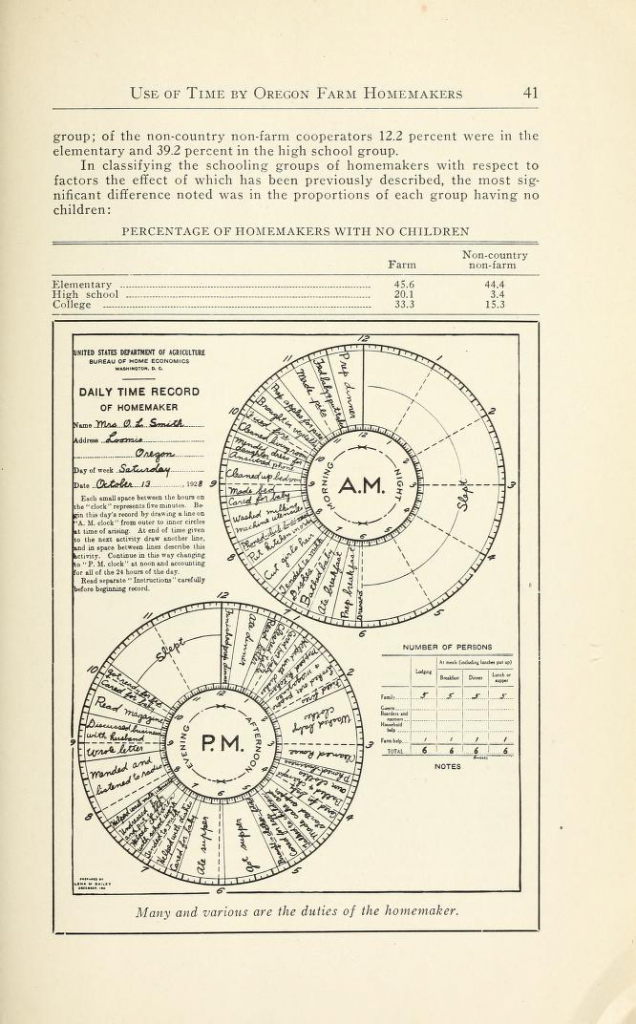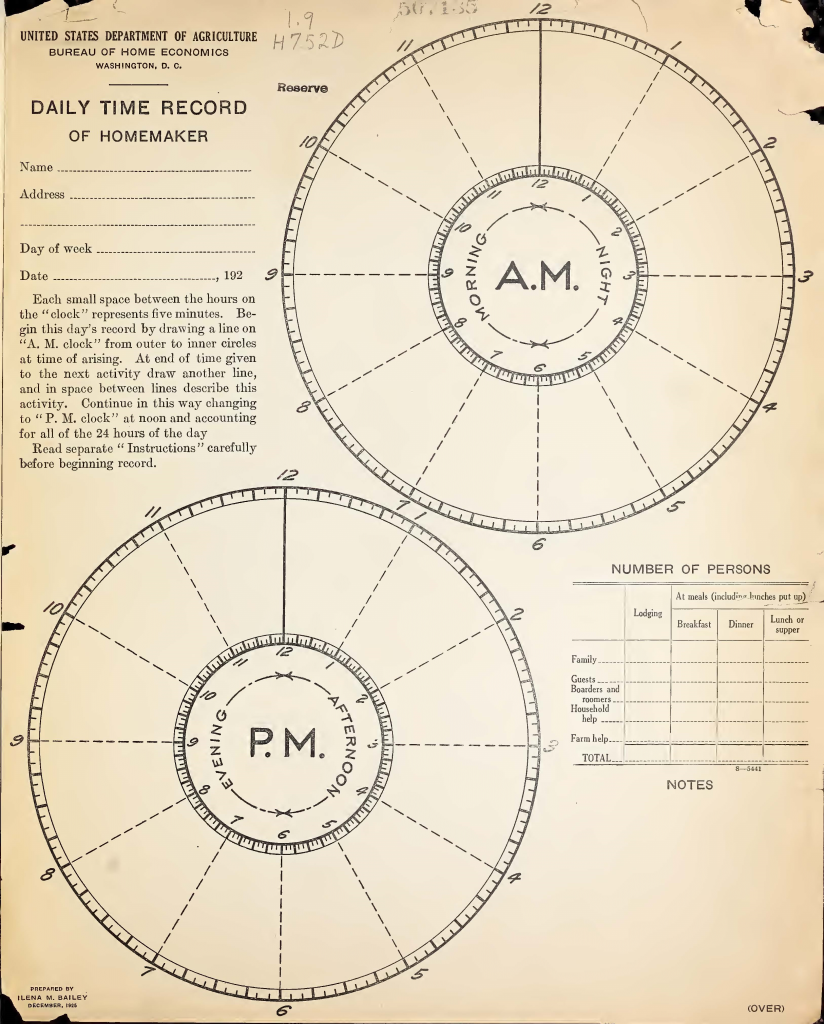Background
The home economics movement changed the way society thought about housework. Housework could be studied, analyzed, and improved. This was important because most American women still worked primarily in the home. Young women fortunate enough to attend college often pursued careers in social science fields like home economics. They hoped their research might improve other women’s daily lives.
Housework on farms was often more physically demanding than in suburban and urban homes. Farms required complete family involvement and they were located away from the modern conveniences of the city. Cooking, cleaning, and watching children was only the start. Housewives on farms also worked in the field, grew a garden, tended to animals, canned food, made clothes, managed field workers, took in boarders, and served as family doctor.
About the Image
This daily housekeeping log was created by social scientists at the United States Bureau of Home Economics. It was used by Maud Wilson at Oregon State Agricultural College for her study Use of Time by Oregon Farm Homemakers. Five hundred and thirteen Oregon women participated in the study. Each participant completed this daily log for one week.
Maud Wilson used these logs to analyze housewives. She reported that the average housewife did fifty-three hours of housework per week. A farm housewife spent an additional twelve hours per week on farm-specific work. Maud Wilson concluded that appliances, domestic help, and training would improve housewives’ experiences. Unfortunately, few women could afford such investments.
Vocabulary
- boarders: People who rent a room in a family’s home. Boarders typically received free meals as part of their payment. Renting bedrooms to boarders was a popular way for families to make extra money.
- canning / canned food: The act of preserving fruits and vegetables in jars for later consumption. Canned food can be stored without a refrigerator.
- home economics: The study of the science and economics of the home, including cooking, cleaning, and taking care of children.
- housework: Work around the home, including cooking, cleaning, shopping for clothes and food, and taking care of children.
- social science: The scientific study of society and social interactions. Social sciences include home economics, economics, communications, sociology, psychology, public health, and more.
Discussion Questions
- Examine the blank log. What information is collected? Why would this information be useful to a researcher?
- Examine the log completed by Mrs. Smith. How does she spend her day? What are the most surprising/interesting aspects of her log? What conclusions can you draw about her life?
- Why were social scientists interested in the lives of housewives in this era?
- Do you think this research would have influenced real housewives in rural areas? Why or why not?
- Why is it significant that a woman conducted this study? What does this tell us about the field of home economics?
- How might a scientific record of household tasks change the meaning of housework? To what extent did it elevate the work of housewives? To what extent did it promote traditional gender roles?
Suggested Activities
- Explore the intersections of education, social science, and housework by combining this resource with the life story of Ellen Swallow Richards and the document from the Course in Domestic Arts at the Agricultural College of Utah.
- Give students copies of the blank diagram and ask them to keep a daily log for one week, just like the participants in this study. Like the example from Mrs. Smith, they should record the hours they spend on activities throughout the day (for students this might be activities such as school, homework, extracurriculars, meals, etc.) Or, as a variation, ask them to track the work of their own mothers or female caretakers to compare how the responsibilities of women have changed over time.
Themes
SCIENCE, TECHNOLOGY, AND MEDICINE; DOMESTICITY AND FAMILY








